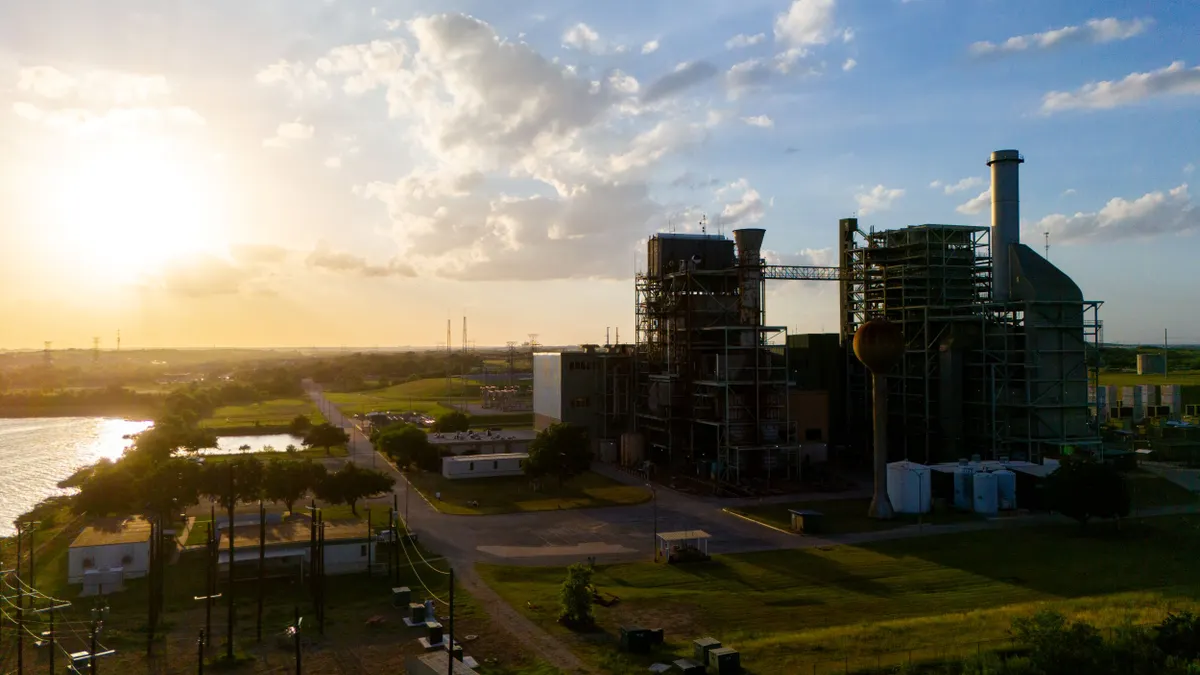Dive Brief:
- The Science Based Targets initiative has released a draft standard for companies in the power sector to set near- and long-term climate targets to reach net-zero greenhouse gas emissions by 2050, as well as manage transition risks.
- SBTi said the draft, released Sept. 2, is intended for companies engaged in power generation of low-carbon sources or unabated fossil fuels, power transmission and distribution companies, energy trade or retail and energy storage.
- The global target-validating organization said the Power Sector Net-Zero Standard is designed to be interoperable with “Version 2” of its broader Corporate Net-Zero Standard, which is currently being pilot tested. This version of the framework focuses on companies going “from ambition to progress,” and will still require corporations hoping to get their goals validated to target limiting global temperature rise to 1.5 degrees Celsius.
Dive Insight:
SBTi’s draft Power Sector Net-Zero Standards is designed to update and replace the organization’s “Quick Start Guide for Electric Utilities,” issued in 2020. The standards are designed to apply to any companies who generate at least 5% of their total annual revenue from electricity generation or whose combined greenhouse gas emissions generated from power sector activities and sources represent at least 5% of a company’s GHG inventory or are above 10,000 tons of carbon dioxide equivalent, according to the draft.
SBTi noted in a Sept. 2 release that the power sector is responsible for around 40% of global energy-related emissions, but critical infrastructure and power generation capacity are threatened by an increasing exposure to climate risks, citing 2024 reports from the International Energy Agency and United Nations Environment Programme finance initiative, respectively.
“Rapid decarbonization is both urgent and strategic [for the power sector],” SBTi said in the release. “At the same time, the sector’s role as an enabler of decarbonization across other industries positions it for long-term growth in a carbon-constrained economy.”
The draft standards classify power generation activities — including low-carbon sources like renewables, biomass, nuclear and carbon capture and storage-equipped fossil fuels and fossil fuels — as scope 1 CO2 emissions. Transmission and distribution activities qualify as scope 2 CO2 emissions and scope 1 sulfur hexafluoride emissions, a synthetic gas compound typically used in electric power systems, according to the Environmental Protection Agency. Storage activities will be classified as scope 2 CO2 emissions, and any electric trade and retail activities will be categorized as scope 3 CO2emissions under the draft standards.
Industry-related activities not covered by the power sector standard are scoped into SBTi’s broader Corporate Net-Zero Standard. That will include the “production, transmission and distribution of energy carriers other than electricity,” such as natural gas, hydrogen and heat; power sector equipment manufacturing; activities related to electricity use; activities involving electricity use “for the production of other goods or other energy carriers, such as hydrogen production;” and “companies with power generation activities solely for own electricity consumption.”
SBTi is seeking public feedback and consultation on the power sector draft standards until Nov. 3.
The organization said the power sector standards are designed to be linked to the cross-sector criteria included in the revised corporate standards, released in March. SBTi launched a pilot for the revised standards in June, which made substantial changes to the framework’s scope and introduced tailored requirements by company size and location. The first phase of the pilot ended Aug. 15, and SBTi said on a page tracking the standard’s development that it is reviewing feedback to finalize a new draft of the standards and choose companies for a hands-on pilot.
SBTi said the power standards can also be linked to criteria in its Financial Institution Net-Zero standards, “if applicable.” SBTi released final standards for financial institutions in July, which represented the first such framework for the financial sector. Those sector criteria are designed for and apply to any entities that generate 5% or more of their revenue from lending, asset owner investing, asset management investing, insurance underwriting or capital market activities.
In August, the target validation organization also released a draft net-zero standard for automakers and auto parts manufacturers and is accepting applications from the automotive industry to participate in a pilot until Sept. 12.










